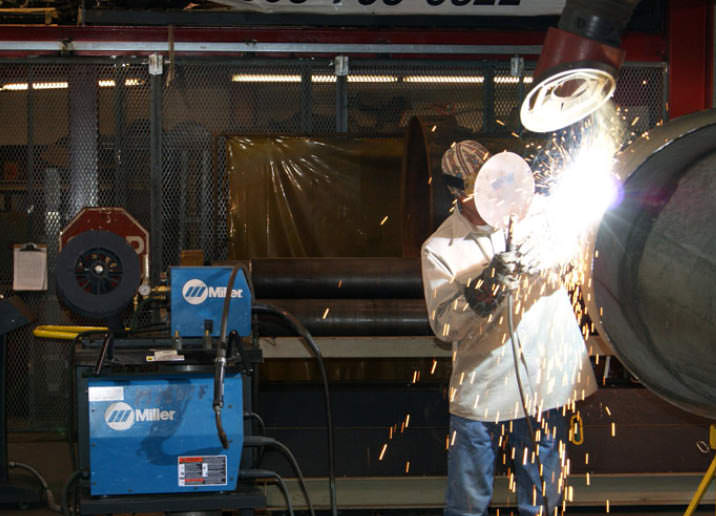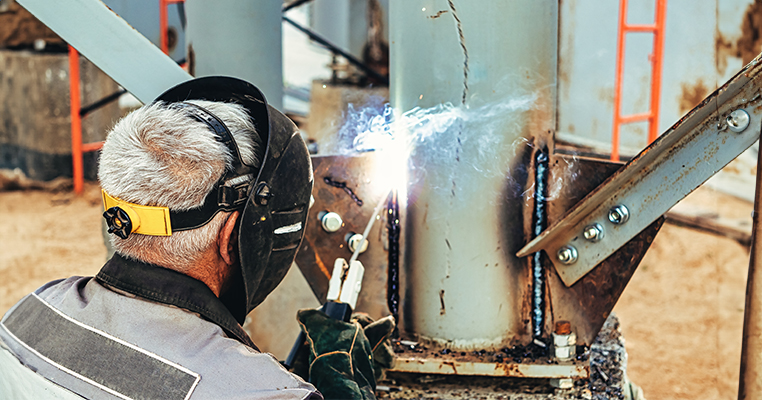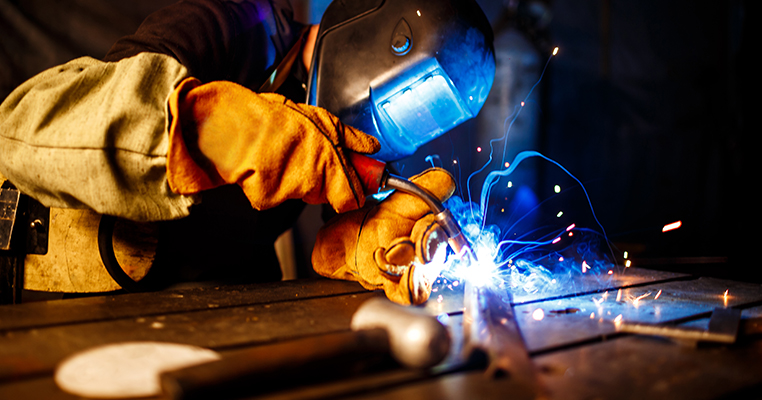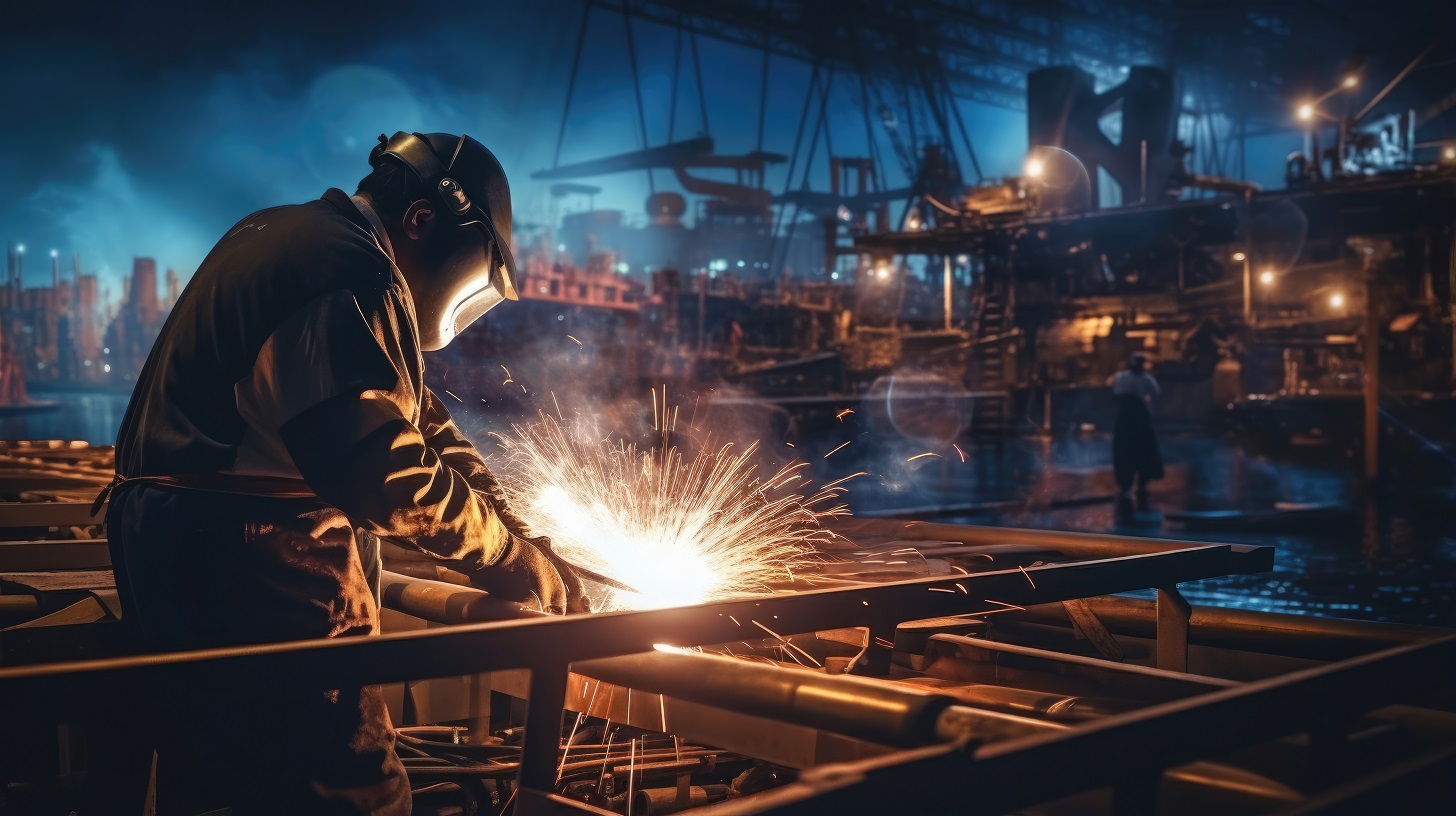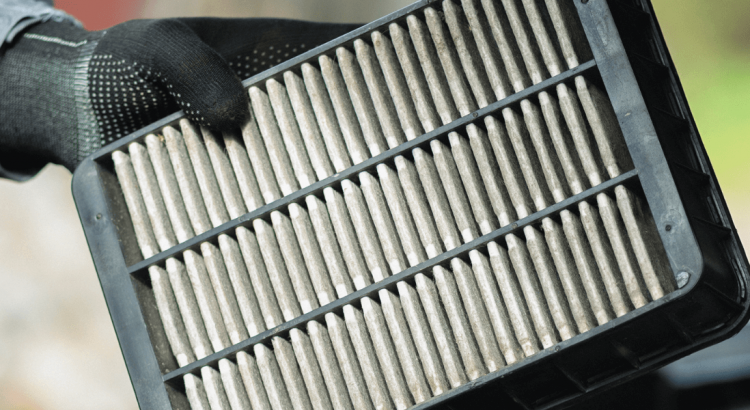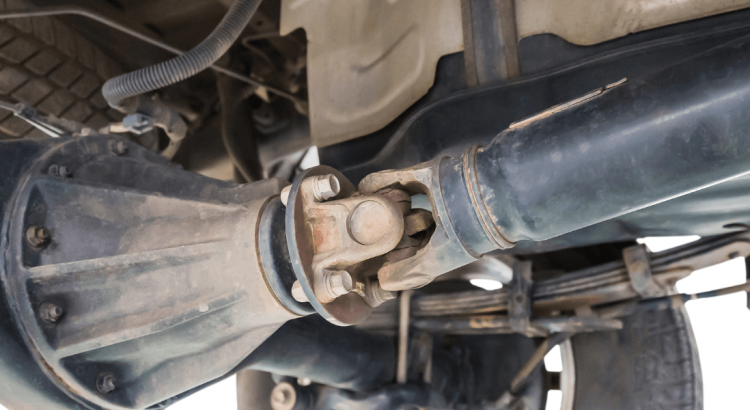Analyzing the Efficiency of Portable vs. Stationary Fume Extractors – Red-D-Arc Red-D-Arc
Analyzing the Efficiency of Portable vs. Stationary Fume Extractors
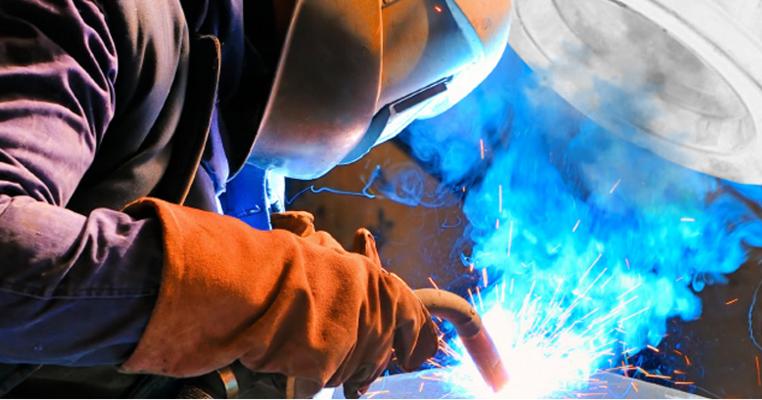
Contents
The fumes from welding are very dangerous. They’re a mixture of various materials, including particles from the electrodes, the flux, the metals being welded, coatings on the filler, and other materials. This can include silicas, metal silicates, fluoride fumes, steel additives like chromium, nickel, manganese, molybdenum, vanadium, titanium, cobalt, copper, and others, hexavalent chromium from stainless steel, oils, rust inhibitors, zinc – the list goes on.
Needless to say, breathing in any of this is awful.
“Metal fume fever is a disease most often associated with welders. Welding may cause pulmonary inflammation from the submicron particles of metal oxides in the fumes. Most often, the metal oxide is zinc oxide, but cadmium and manganese and their oxides are also present in some welding processes. Metal fume fever presents as a flu-like syndrome with fever, malaise, bronchospasm, and bi-weekly variations in severity. Symptoms are classically weakest on Sundays and strongest after returning to work on Mondays and Tuesdays.” – NCBI.
Metal Fume Fever is just one of the many hazards of welding. Other respiratory hazards, particularly prolonged and continued exposure, can include lung cancers and more. For the health, happiness, and continued productivity of your welding operators, you need some means of protecting them from those fumes.
While masking is a good idea, you also want to do anything you can to remove those hazardous fumes from the environment. OSHA has specifications for ventilation, but one thing that can help is a fume extractor.
What is a Fume Extractor?
A fume extractor is, in essence, a vacuum. The cheapest fume extractors might be little more than a shop-vac-style vacuum that filters and returns the air, while larger and more powerful units can vent fumes outdoors, provide multi-layer filtration, and more.
Fume extraction systems come in two general forms: portable and stationary.

As the names imply, the difference between these two kinds of systems is whether or not they’re mobile. Portable fume extractors can be moved from station to station, positioned around different workpieces, and can even be brought onto a job site. Meanwhile, stationary fume extractors are centerpieces of shops, with hoses and tubing to direct the extraction within their range.
All About Portable Fume Extractors
Mobile or portable fume extractors are smaller units that are more easily moved from place to place. That can mean different areas of a shop, different rooms in a building, or different locations entirely. A portable fume extractor can be brought onto a job site or simply moved between stations in a multi-person shop.
Mobile fume extractors are generally single-capacity units, which means they have the power, filtration, and fittings necessary to remove fumes from one work area at a time. Only the larger and more powerful portable units tend to have multiple hoses and attachment points for removing fumes from multiple workspaces at once.
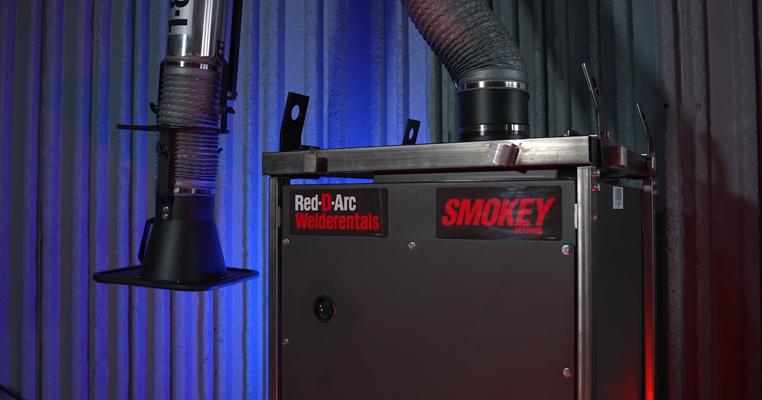
Mobile fume extractors are designed with filtration as a primary mechanism to enhance safety in the work environment. Typically, a hose targets the workspace, positioned as closely and safely as possible to the operational area. The vacuum system draws in air from this vicinity, channeled into the fume extractor, and then guided through a series of filters. These filters are adept at removing particulates and other contaminants. Once the air undergoes filtration, it’s reintroduced into the environment, now largely devoid of harmful pollutants.
The merit of mobile fume extraction units extends beyond their mobility. Their efficacy is deeply rooted in their design and the technologies they encompass. Top-performing units strike a harmonious balance between mobility, robust extraction features, and cutting-edge filtration systems; this ensures the comprehensive capture and mitigation of detrimental welding fumes.
Understanding MERV (Minimum Efficiency Reporting Value) is pivotal when considering filtration. This rating, which ranges from 1 to 16, indicates the proficiency of a filter in trapping and eliminating particles from the air.
Here’s a brief overview:
- MERV 1-4: Captures less than 20% of particles sized 3.0 – 10.0 microns. Best for larger particles like pollen, dust mites, and carpet fibers.
- MERV 6: Filters about 49.9% of particles sized 3.0 – 10.0 microns. It is good for medium pollutants like mold spores and cement dust.
- MERV 8: Traps around 84.9% of particles sized 3.0 – 10.0 microns and suited for finer particles.
- MERV 10: Catches 50% – 64.9% of particles sized 1.0 – 3.0 microns and more than 85% of 3.0 – 10.0-micron particles. It works well against things like auto emissions and milled flour.
- MERV 12: Filters 80% – 89.9% of particles sized 1.0 – 3.0 microns and 90% or more of those sized 3.0 – 10.0 microns. It is commonly recommended as the minimum for welding fumes, though 15 or higher would be a much better choice to catch more ultrafine particles.
- MERV 14: Captures 75% – 84% of particles sized 0.3 – 1.0 microns and over 90% of 1.0 – 3.0-micron particles. Great for bacteria, smoke, and tiny pollutants.
- MERV 15: Filters 85% – 94% of particles sized 0.3 – 1.0 microns. It’s suited for ultrafine pollutants.
- MERV 16: Filters at least 95% of particles sized 0.3 – 1.0 microns. It is similar to an N95 mask, making it excellent for the smallest contaminants.
It’s crucial to note that welding fumes can consist of both “ultrafine” and “fine” particles, some as small as 0.1 microns. The higher the filtration rating, the more adept it is at capturing these minute contaminants. However, enhanced filtration also implies more frequent filter maintenance and replacements. A heightened filtration grade in welding is usually advantageous, ensuring optimal air quality and worker safety.
The Pros and Cons of Mobile Fume Extractors
Mobile fume extractors have a few pros and a few cons, most of which you can probably guess.
- Pro: They are mobile and thus adaptable to various circumstances. If you have to weld in enclosed spaces, in awkward positions, or on larger objects that can’t be repositioned or put in a contained location for fume extraction (or on an extractor table), a mobile fume extractor can be positioned and directed to the specific area of action.
- Pro: They are easy to install and easy to relocate as necessary. Mobility is the primary benefit of a mobile fume extractor, after all. Whether you need to move it across a workpiece, across a room, or to another facility entirely, you can do so with ease using a mobile fume extractor.
- Pro: They’re lightweight and easy to use, making them ideal for short-term, light-duty welding. They aren’t going to turn over the air in an entire facility on their own, but they can be very effective for sporadic welding when other ventilation isn’t an option.
As you might guess, the drawbacks of a mobile fume extractor generally amount to the limitations of the system.
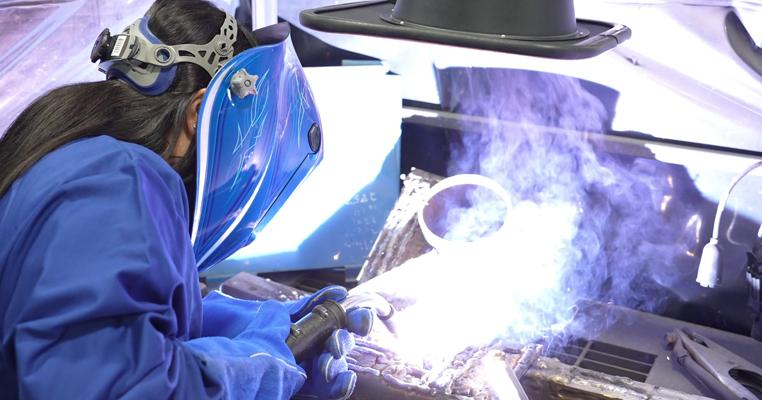
- Con: They are limited in their capacity. Mobile fume extractors generally have smaller, more lightweight filters and have a limited amount of throughput; they can’t be too powerful because they have to rely on standard electricity supplies, smaller and more portable motors, and limited space. That means they’re only useful for smaller or shorter-duration projects
- Con: Mobile units have more points of possible failure and more maintenance requirements than stationary units. Whether they have casters that can wear out, smaller brush motors that can burn out or require maintenance, or just sub-par filters that need to be changed or cleaned frequently, there’s only so much these units can do before they wear out.
- Con: Many of the cheaper mobile fume extractors may also have limitations on what they can handle. They may have lower filtration ratings, they may have a smaller capacity for airflow, or they may only have a certain amount of suction to remove fumes, which may not be suitable for all projects.
There’s nothing inherently wrong with using a mobile fume extractor. They’re perfectly viable for what they do; you just need to make sure you aren’t asking more of it than it’s designed to handle, consequently putting yourself, your operators, or your environment at risk.
All About Stationary Fume Extractors
As you might imagine, the opposite of a portable fume extractor is a stationary fume extractor. Rather than being a portable unit, you can move from place to place, a stationary fume extractor is more like a whole-building HVAC system in practice. It’s a larger unit that is designed to be placed in a central location for a shop or facility and uses ductwork to guide where its suction is required.
Stationary fume extractors, also known as fixed units or central vacuums, are large and powerful systems made for permanent installation. They usually have multiple components, including a vacuum unit, a dust collector, a whole electrical subsystem, and a panel; however, various ductwork and hoses are necessary to guide its operations, a filtration system, and even vents that direct exhaust air outdoors.
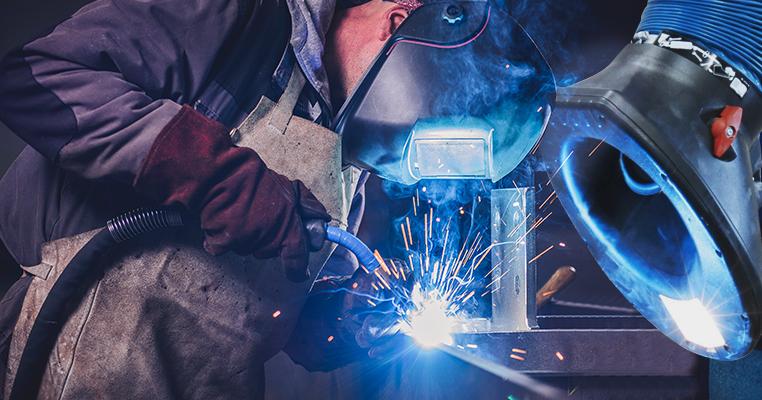
Stationary systems are generally best used when a facility does a lot of sustained or heavy-duty welding, cutting, and other operations and does so in multiple locations throughout a shop. They can handle high volumes of fume extraction from multiple locations simultaneously and can turn over the air in an entire facility with ease if necessary.
These kinds of fume extractors are often built into a facility when the facility is constructed, or at least the facility will be designed with such a system in mind. They may be positioned in a central utility room or even on the roof of a facility, with ductwork guiding where suction is needed.
The Pros and Cons of Stationary Fume Extractors
While, to a certain extent, you can invert the pros and cons of portable fume extractors, there are some unique considerations in the pros and cons of stationary fume extraction systems.
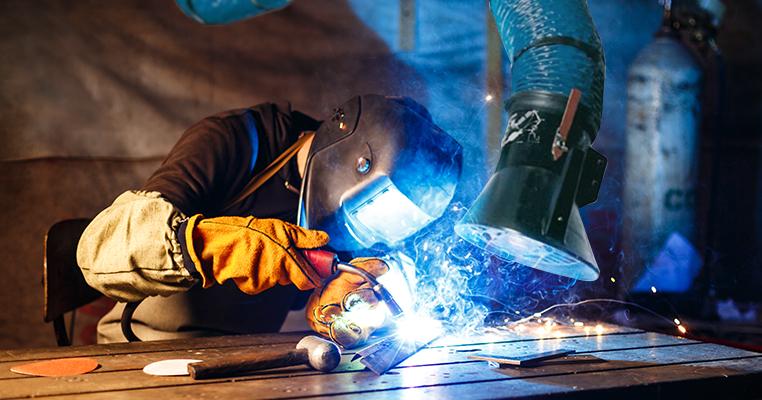
For example:
- Pro: Stationary systems are larger and more powerful than portable systems. They have larger motors and higher-capacity electrical service, allowing them to provide much higher levels of suction for more thorough and complete fume extraction.
- Pro: They can work in multiple locations at once. A portable unit generally only has one input; stationary systems can have multiple inputs throughout a facility and can operate them all at the same time. Some of the largest systems can accommodate as many as 100 locations throughout a facility, though only a handful of them can operate simultaneously.
- Pro: Stationary systems generally have a longer life span with lower maintenance needs. They’re designed for longevity and for repair rather than replacement. Filters are usually cleanable rather than disposable, motors are more resilient, and the parts of a system are more durable.
- Pro: Stationary units generally have better filtration than mobile units. Moreover, they don’t redirect air back into the facility, instead relying on external ducting to bring fresh air in and bad air out. This means even imperfect filtration is still more protective of welding operators.
At the same time, there are some significant drawbacks to stationary systems.
- Con: They’re, well, stationary. A stationary system cannot be moved from point to point throughout a facility and absolutely cannot travel to another job site. While they can have some flexibility within a work area using flexible tubing, they still usually have a fixed point of access to a shop area and are limited in scope within that area.
- Con: Stationary systems are more complex to design and install than portable units. A portable unit can be purchased and set up within minutes; a stationary system can be an extended project to design, install, and configure. Moreover, you have to know more or less the capacity you’ll need and design the system around that. Upgrades can be difficult without a complete reengineering of the system.
- Con: The cost of a stationary system tends to be significantly higher than portable systems. Since they’re larger, more complex, and more robust, each and every component will be more expensive, and the sum total will be significant.
Portable systems are generally best used for small-scale or mobile operations, while stationary systems are best used for larger-scale operations, automated fabrication facilities, and other larger ongoing operations.
Which Kind of Fume Extractor is Right for You?
The decision between a portable and a stationary system can be difficult. You’ll need to consider different factors in your operations.
First, how is your workplace laid out? Sometimes, a mobile unit is the only option available if you have limited space, move from place to place for your welding, or travel for your work. A stationary unit will be better for fixed-point welding. The larger your operations – and the more welders you have working at a time – the more you’ll need a stationary system.
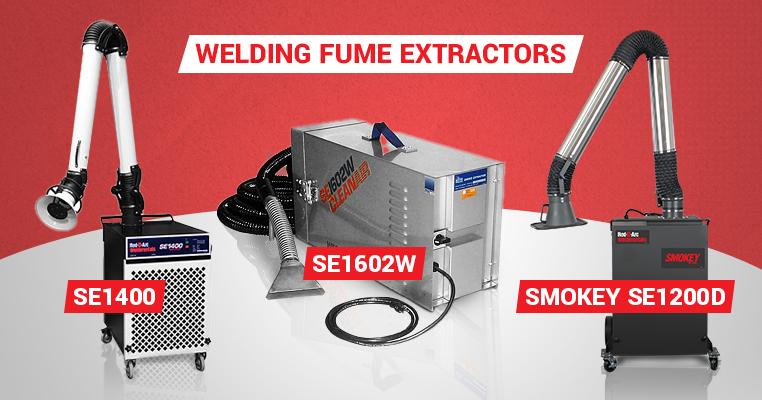
It’s also worth mentioning that certain kinds of welding fumes may require larger systems, or at least systems with better filtration, to remove properly. Ozone generated from aluminum welding, for example, requires outside ventilation, which you can’t do with a portable system unless it’s designed for it.
If you’re unsure of the kind of system you need, you can always try renting one and seeing if it suits your needs. Our equipment rentals, including fume extraction systems, offer numerous options for you to try out.

Red-D-Arc Welderentals™ an Airgas company rents and leases welders, welding positioners, welding-related equipment, and electric power generators – anywhere in the world. Our rental welders, positioners and specialty products have been engineered and built to provide Extreme-Duty™ performance and reliability in even the harshest environments, and are available through over 70 Red-D-Arc Service Centers, strategically located throughout the United States, Canada, the United Kingdom, France, and the Netherlands, as well as through strategic alliances in the Middle East, Spain, Italy, Croatia, and the Caribbean. From our rental fleet of over 60,000 welders, 3,700 weld positioners, and 3,700 electric-power generators, we can supply you with the equipment you need – where you need it – when you need it.
